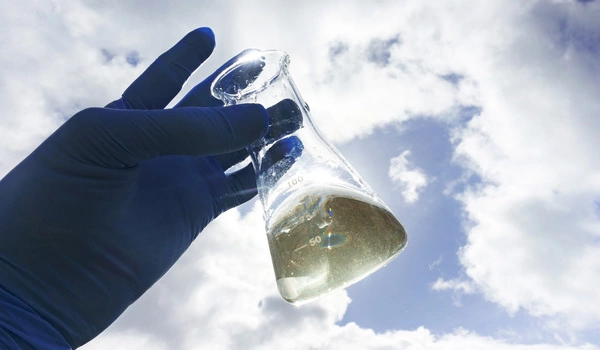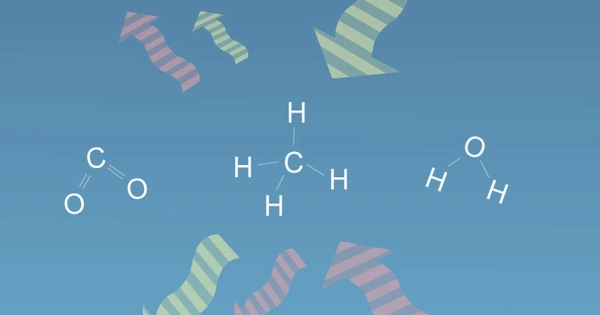A lack of available metals may be responsible for more nitrous oxide than previously thought, according to collaborative research. Microbes, like us, require some metals in their diet to stay healthy. Metals aid microbes in fully “digesting” food. Following a satisfying meal, the microbes that gain energy by chemically reducing nitrate produce a harmless byproduct: nitrogen, the gas that accounts for 78 percent of the Earth’s atmosphere.
However, if a specific metal, copper, is not available, these microbes are unable to complete the biochemical “digestive” process known as denitrification. Instead of nitrogen, they will emit the potent greenhouse gas nitrous oxide.
Previous laboratory studies using pure cultures demonstrated that copper availability was critical for denitrification. Now, research from the labs of Daniel Giammar, the Walter E. Browne Professor of Environmental Engineering at the McKelvey School of Engineering, and Jeffrey Catalano, professor of earth and planetary sciences in Arts & Sciences at Washington University in St. Louis, has revealed that there may not always be enough copper available for denitrification in the complex, dynamic aquatic environments these microbes call home.
Their research was published in the journal Geochimica et Cosmochimica Acta. “Material in a beaker is not the same as material in the environment,” Giammar said. “A big part of our approach was to take real materials from real environmental systems and bring them to the lab and look at them in controlled ways.”
At the moment, models that predict gas release from various systems do not account for these factors. They are aware that factors such as food availability and temperature may influence greenhouse gas emissions, but they do not account for the effect of metals on this aspect of greenhouse gases.
Neha Sharma
The findings underscore the outsized role of copper when it comes to the release of nitrous oxide. “At regular, background levels, these systems may not have enough metals to carry out the process,” said Neha Sharma, a PhD student in Giammar’s lab.
This is significant because nitrous oxide is the third most potent greenhouse gas, and microbes in aquatic ecosystems produce half of it. Sharma and Elaine Flynn, a senior scientist in Catalano’s lab, went to the source to learn more about how copper affected gas release in these systems. Sharma and Flynn collected microbes from wetlands and riverbeds in collaboration with three US Department of Energy (DOE) labs: Oak Ridge, Argonne, and the Savannah River Site. They discovered that the amount of copper in the systems was insufficient to complete denitrification.
“Then we wanted to see, if we manually added copper, would it affect the release of nitrous oxide,” Sharma said. It did. “All of the nitrous oxide was converted into other things,” but no harmful greenhouse gases.
According to Sharma, this discovery could point to new ways to combat global warming. “If we put some metals into natural systems, we might be able to reduce the release of N2O,” she said. It may also have a more immediate impact on climate researchers.
“At the moment, models that predict gas release from various systems do not account for these factors,” Sharma explained. “They are aware that factors such as food availability and temperature may influence greenhouse gas emissions, but they do not account for the effect of metals on this aspect of greenhouse gases.”

Extreme complexity
Climate models must incorporate all of the real-world complexity present in specific ecosystems in order for people to truly understand and make useful predictions about climate. Another study, published in the journal ACS Earth & Space Chemistry in May, looked at the behaviors of four different metals in riparian wetland soils from the Savannah River Site and stream sediments near the Oak Ridge National Laboratory.
The research team, which included Sharma and Zixuan Wang, a PhD student in the lab of Zhen “Jason” He, professor of energy, environmental, and chemical engineering, wanted to know if the metals’ availability changed when they were underwater (with little oxygen) versus when they were exposed to air.
The researchers had reason to believe that the four metals, which are all important in the biochemical reactions of microbes, would behave similarly. However, the metals behaved differently in similar situations, which surprised them. “This means that the bioavailability of certain metals varies with the season,” Sharma explained. “It simply emphasizes the extreme complexity of natural systems.”
Capturing that complexity necessitates the collaboration of a number of specialists and partners. “As environmental engineers, we are constantly asking ourselves, “Why does this matter?” What effect will this have on the climate? ‘Can anything be done?’ “Giammar explained. “However, we collaborated with primary investigator Jeffrey Catalano,” adding a strong geochemistry perspective to the work.
This research, in addition to receiving funding and access to watersheds from DOE laboratories, contributes to the DOE’s knowledge base. It adds to the puzzle of “watershed function,” which is the study of the biogeochemical functions of watersheds and their inhabitants. Meanwhile, other researchers in different fields are doing the same.
Knowledge, when combined, has the potential to change people’s perceptions of the watershed’s relationship to climate. “If anything, we saw that the copper limitation was a bigger deal than we had anticipated,” Giammar said. “That is why I believe it is critical to investigate the environmental complexity.”





